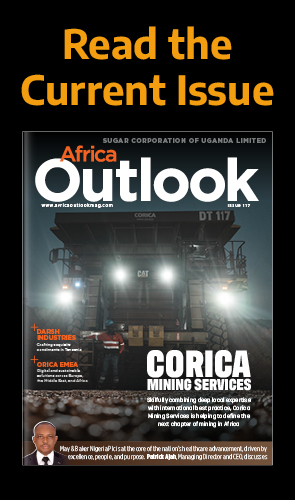The outlook for African infrastructure has never been more encouraging with the increasingly real potential to transform the fortunes of the continent and help ensure a brighter future for all of Africa.
Africa has the highest rate of economic growth globally after South East Asia. On a country basis, the continent is home to six of the ten fastest growing economies in the world in the past five years, according to the IMF, and will contain seven of the ten highest growing economies in the next five years.
This impressive growth is taking place despite a chronic lack of infrastructure. On average only one in three Africans has access to electricity and less than 20 percent of Sub-Saharan Africa’s road networks are paved.
Back in 2009, the World Bank published a landmark report, ‘Africa’s Infrastructure: A Time for Transformation’, which highlighted the dire state of African infrastructure and established an annual expenditure target of US$93 billion in the next decade. These sums are well beyond the funding capabilities of African governments meaning that significant amounts of external financing are required if the continent’s infrastructure needs are to be met.
Up until the mid-1990s, Official Development Finance (ODF) financing from organisations such as the World Bank or African Development Bank were the dominant form of external financing in Sub-Saharan Africa. While funding from these sources has grown over the intervening years, ODF now only makes up around one third of total external financing.
This is a result of the significant surge in the involvement of the private sector in construction project financing in the past fifteen years. Since 1999, Private Participation in Infrastructure (PPI) has been the largest source of external financing for more than half of Africa’s external financing needs.
The massive increase in funding from China has been particularly important. From virtually nothing in 2002, it now makes up around 20 percent of the total, making China Africa’s third largest source of external financing.
INFRASTRUCTURE OUTLOOK
In just the past year, the value of infrastructure projects under construction in Africa increased by almost 50 percent from U$222 billion in 2013 to US$326 billion in 2014. On a regional basis, Southern Africa continues to account for the lion’s share of expenditure at US$145 billion, or 46 percent of the total value with South Africa, as the continent’s most developed economy and the most popular destination.
West Africa is now the second largest region accounting for 23 percent. Although this is still significantly less than Southern Africa, the gap is closing with growth in the West Africa region led by Nigeria, and the country benefiting from its recently upgraded status as the largest economy in Africa following last April’s rebasing of the country’s GDP.
In terms of what the money is being spent on, energy and transportation are consistently the two largest sectors throughout Africa – combined they account for around 80 percent of total project value throughout the continent.
In West Africa the transport sector leads the way. In Nigeria for example, the building of transport infrastructure is expected to be one of the main sources of growth for the Nigerian construction industry over the medium term. Lagos is the commercial capital of Nigeria and with an estimated – and growing – population of 20 million, transport links around the city is a priority. While the initial impression of a first time visitor to Lagos today may be one of barely controlled chaos, I can assure you that compared to five years ago the situation has improved with increased bus routes, commuter rail lines and motorways such as the new Lekki-Epe expressway.
Again, Chinese involvement in the transport area has been significant, as illustrated by the US$1.5 billion Lagos to Ibadan railway contract, awarded to China Civil Engineering Construction Corporation, and the Olokola Deepwater port project, awarded to China Ocean Shipping Group.
Meanwhile the main focus is the power sector in South Africa, which has the most advanced power sector on the continent, with the state power utility Eskom supplying 95 percent of the country’s electricity.
In 2005, Eskom embarked on a US$27 billion capacity expansion programme with the main highlight being three new power plants (Medupi, Kusile and Ingula) which will start to come in stream in the next few years and will increase South Africa’s generating capacity by around a quarter.
However the challenge for Eskom is that more than half of their current generating capacity is operating beyond their design life and so the power cuts (or ‘load-shedding ‘as it is euphemistically called) currently being experienced are likely to continue for some time.
Historically coal has been the main fuel used to operate South Africa’s power plants. Encouragingly, however, there has been a significant growth more recently in the number of renewable energy projects. This is being driven by South Africa’s, cumbrously named, Renewable Energy Independent Power Producers Procurement Programme, launched in August 2011 and has been a major success bringing more than sixty renewable energy projects into or close to commercial operation in the wind, solar photovoltaic and concentrated solar sectors.
In the long-term, the International Energy Agency projects that by 2040, renewable energy will account for just under half of the growth in Sub-Saharan power generation, as the area unlocks its vast renewable potential in solar, hydropower, wind and geothermal.
LOOKING TOWARDS THE FUTURE
The economic gains to be realised by improving Africa’s infrastructure will be significant. According to the World Bank, lack of infrastructure costs Africa two percent per annum in reduced output each year.
Improvements in energy will lower production costs, boost productivity and increase employment due to the emergence of a more competitive manufacturing sector. Improved transport links will reduce transportation costs and boost regional trade and global connectivity; while improvements on the project management side will make a significant impact in the retail, housing and hospitality sectors, in turn having a knock-on effect on tourism.
Africa has not always been blessed with great leadership historically, but the costs of poor infrastructure and the clear benefits of increased investment continue to be recognised by African governments today, with sustainable infrastructure development seen as a key catalyst for economic development on the continent.
Together with the continued support of development agencies, the increasing involvement of the private sector, and further boosted by China’s growing African footprint, the outlook for African infrastructure has never been more encouraging with the increasingly real potential to transform the fortunes of the continent and help ensure a brighter future for all of Africa.
Writer: David Mcilroy, Head of African Investments, Alquity Investment Management
Read the full article in June’s Africa Outlook magazine here: https://www.africaoutlookmag.com/magazine/issues/africa-outlook-issue-28































